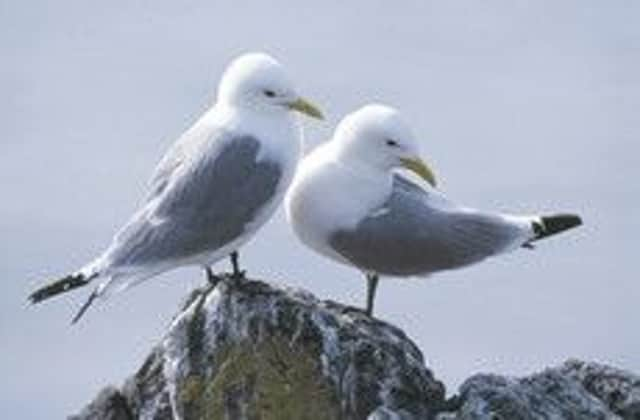St Kilda's kittiwake population close to brink of collapse


Conservation experts fear the kittiwake population on St Kilda is at risk of collapse after numbers plummeted to their lowest levels.
The National Trust for Scotland (NTS) carries out yearly monitoring of the archipelago’s bird population. Across the seven monitoring sites this season, however, there was just one kittiwake nest and one chick hatched which later died.
Advertisement
Hide AdAdvertisement
Hide AdNow the charity fears it is witnessing the decline of the Atlantic’s most significant seabird sanctuary. After a century of growth, bird populations are said to be rapidly falling and fulmars, guillemots, puffins and razorbills are also threatened.
Dr Richard Luxmoore, senior nature conservation adviser at the NTS, said the decline signalled changes in the marine environment particularly in plankton that are vital to the food chain.
He said: “Seabirds are essentially part of the marine ecosystem. Although they breed on land they spend most of their life out at sea and they can tell us a lot about its health.
“In the last 30 years plankton communities have shifted northward by 1,000 kilometres, more than the distance from Edinburgh to Paris, and it’s having huge impact.
“If vegetation shifted by a similar distance there would be pandemonium, but because it’s happening in the sea we tend not to notice.”
This year’s seabird survey recorded “significant declines” across most species.
The NTS has produced a film about its work on St Kilda which explores the factors affecting seabird numbers, including their predators.
Seven species found on the archipelago, 44 miles west of Benbecula in the Outer Hebrides, are geographically significant.
Advertisement
Hide AdAdvertisement
Hide AdConservationists say the northern gannet, Atlantic puffin, great skua and Leach’s storm-petrel, meanwhile, are important on a world-wide scale.
Seabird monitoring looks at breeding abundance as well as breeding success. The first shows more gradual changes to an overall population while the seasonal success can indicate short-term fluctuations.
Dr Luxmoore added: “The message that seabirds are bringing back to us about the marine ecosystem is extremely worrying. We used to think that the tiny organisms in plankton were quite immune to climate change.
“But their shift in range combines with decreased abundance of up to 70%, so it’s not surprising that the seabirds that depend on this are being left high and dry.
“If the inhabitants of St Kilda were to come back now nearly 90 years after their evacuation and see the cliffs that were once teeming with seabirds now almost empty, they would be horrified to see what has happened on the island where they once lived.”